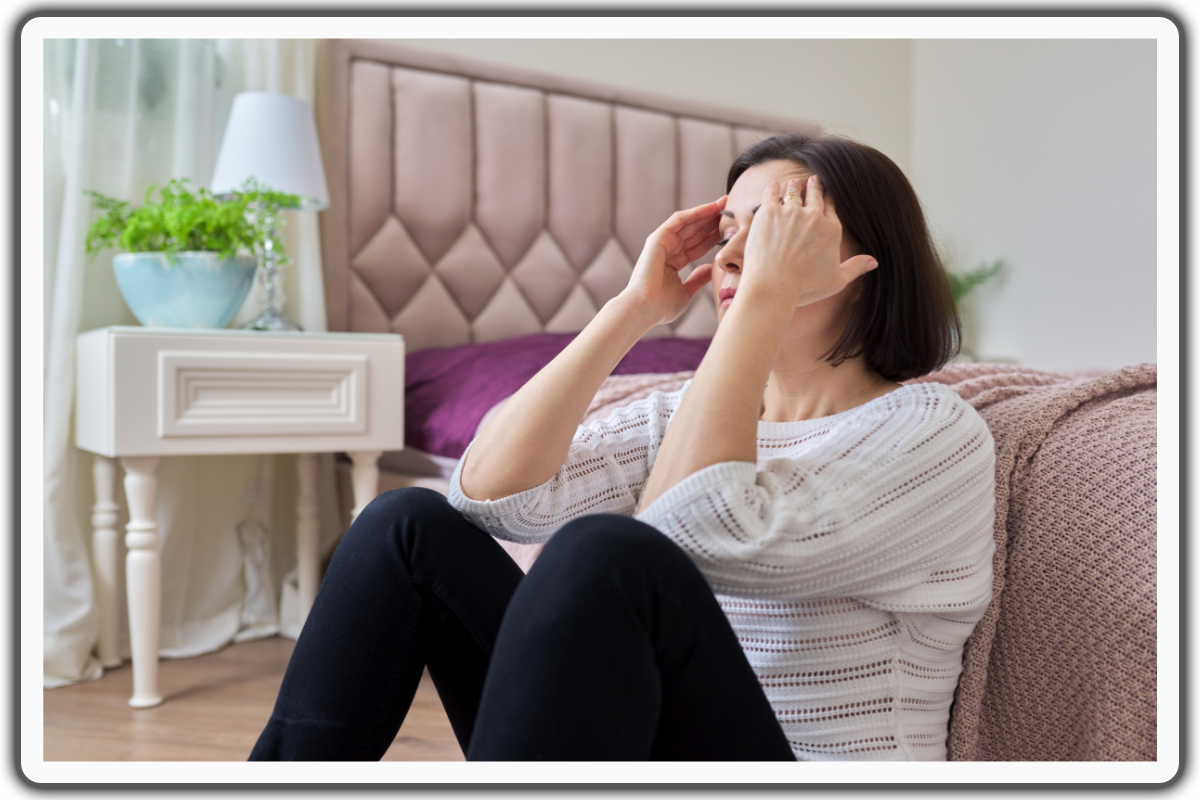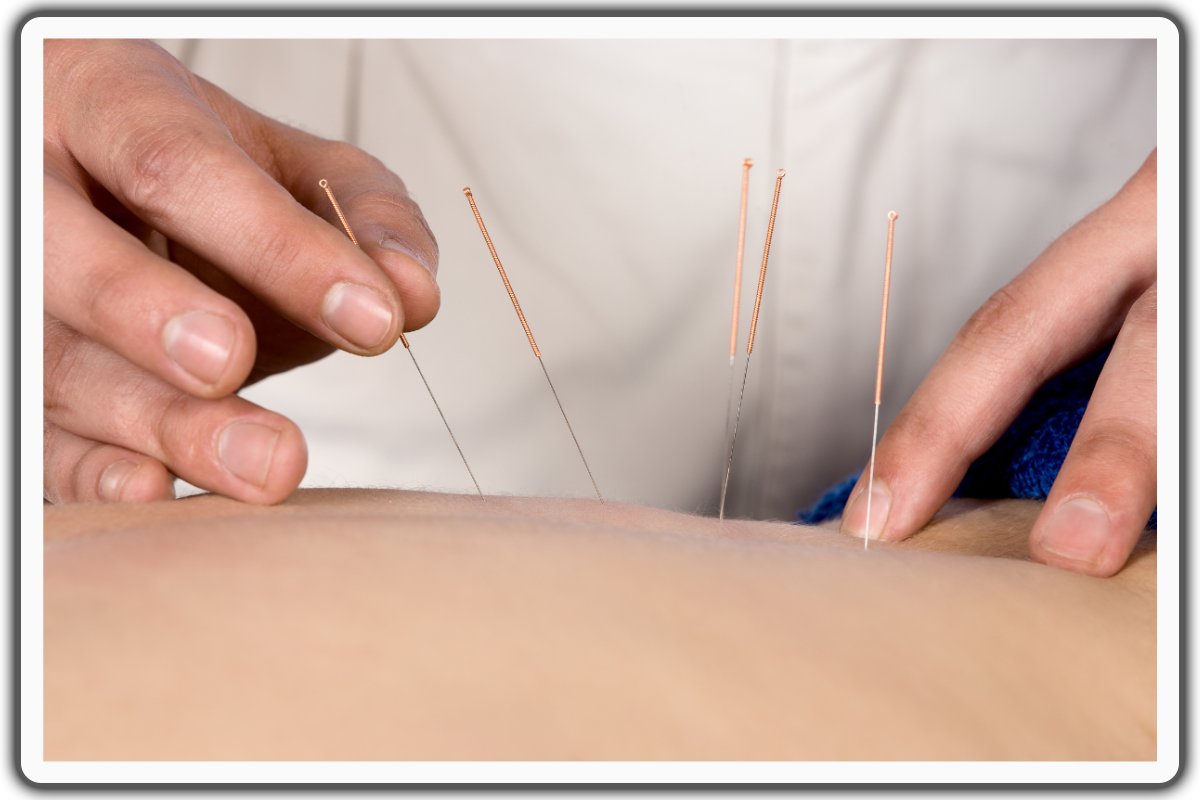
Overcoming Perimenopause Headaches: Effective Strategies
for Relief and Support
Ladies, have you gradually started feeling different as you entered your 40s? Perhaps you’ve noticed mood swings, trouble sleeping, or unexpected fatigue?
Maybe you've experienced increased anxiety, hot flashes, or night sweats.
Most commonly, have headaches become more frequent or severe, sometimes even debilitating?
These persistent headaches can significantly impact your daily life and well-being. These odd feelings and symptoms could be signs of Perimenopausal Syndrome.
This phase, occurring before and after menopause due to reduced ovarian function, often brings a range of symptoms, including autonomic nervous system dysfunction and neuropsychological changes.
If you’ve been experiencing any of these symptoms, you’re not alone—up to 85% of women go through this transition [¹].
In this article, we'll get through some digging into how this inevitable phase eventually most ladies will get through.
What is Perimenopause?

Menopause officially begins one year after a woman’s last menstrual period. However, the perimenopausal phase that precedes it is often the most symptomatic and challenging.
Perimenopause is the transitional period leading up to menopause, marked by changes in the menstrual cycle and the onset of various physical and emotional symptoms.
This phase can start several years before menopause, as early as the mid-30s, but more commonly begins in the 40s.
During perimenopause, the number of viable eggs in the ovaries decreases, leading to less regular ovulation and more erratic hormone production.
There can be periods of estrogen dominance (higher estrogen relative to progesterone) and estrogen deficiency, both of which can cause significant symptoms.
One of which is frequent migraine attacks that we will be focusing on later on.
Aside from headaches, here are other symptoms manifesting during the perimenopausal and menopausal phases:
Mood Swings and Emotional Changes
- Disturbances
- Fatigue
- Hot Flashes and Night Sweats
- Cognitive Changes
- Physical Changes
Perimenopausal Headaches

Perimenopausal migraines are among the most common and frequent challenges faced by women following natural menopause.
This hormonal headache, often more intense and debilitating than a typical headache [³] or a menstrual migraine, can significantly impact daily life and overall well-being.
Studies suggest that up to 60% of women experience migraines during perimenopause [²], with 25% reporting an increase in frequency and severity.
Following this, it was found that 40% of women experiencing perimenopausal episodic or chronic migraine reported a significant decline in their quality of life.
Due to the intensity of these migraines, it often requires migraine sufferers to stop their regular activities and rest in a dark, quiet room.
Hence, increasing reports on this include disruptions in daily functions, including work, social interactions, and family responsibilities, leading to difficulty concentrating, increased absenteeism, and decreased productivity.
The primary causes of perimenopausal migraines include rapid changes in hormone levels, irregular vascular changes, increased stress from mood swings and anxiety, and poor sleep quality or insomnia, all of which can exacerbate or trigger migraine attacks.
Therefore, it is crucial for everyone, not just women, to acquire the necessary knowledge to effectively address this unavoidable challenge.
Addressing Perimenopause Migraine Headaches
Dealing with migraines during perimenopause can be a daunting experience. The good news is that a comprehensive approach can help address and reduce the frequency and severity of these hormonal Perimenopause headaches at the same time, manage menopause symptoms. Here’s how you can take control:
1. Lifestyle Changes

Stay Active: Regular exercise like walking, jogging, swimming, or yoga can be incredibly beneficial. Exercise releases hormones like endorphins, which are natural painkillers, and help regulate hormones and reduce stress.
Eat Well: Maintaining a diet full of fruits, vegetables, whole grains, and lean proteins can promote overall health and help mitigate migraine triggers. Avoid known migraine inducers like caffeine, alcohol, and processed foods. Including omega-3 fatty acids, like those found in fish, may also help reduce migraines.
Manage Stress: Incorporate stress-relief techniques into your daily routine. Yoga, meditation, deep breathing exercises, and mindfulness can all help lower stress levels, which is crucial since stress is a common migraine trigger.
Get Good Sleep: Maintain a regular sleep schedule and practice good sleep hygiene. Avoid stimulants like caffeine before bedtime and create a calming bedtime routine to help ensure restful sleep, which can prevent migraines.
2. Medical Treatments

Pain Relievers: For mild to moderate migraines, nonprescription pain relievers like ibuprofen, aspirin, or acetaminophen can provide relief.
Prescription Medications: If your migraines are more severe, your doctor might prescribe triptans, which target migraine pain specifically. Preventive medications like beta-blockers, anticonvulsants, or antidepressants can also aid reduce the frequency and severity of migraines.
Hormone Replacement Therapy (HRT): For some women, HRT can help stabilize the hormonal fluctuations that trigger migraines. Options include estrogen patches, gels, or low-dose oral contraceptives. It's important to discuss the benefits and risks with your healthcare provider to see if HRT is right for you.
3. Alternative Therapies

Acupuncture: This practice involves injecting thin needles into specific points of your body. Many women find that acupuncture helps reduce the frequency and intensity of their migraines.
Biofeedback: This technique helps you control physiological functions like muscle tension and heart rate, which can help prevent migraines. By using sensors and monitoring devices, you can learn to manage stress more effectively.
Supplements: Some women find relief with supplements like magnesium, riboflavin (vitamin B2), and feverfew. Magnesium helps with muscle relaxation, riboflavin supports energy production in brain cells, and feverfew is a traditional herb used to relieve perimenopause headaches.
Conclusion
Your perimenopausal experiences can be profoundly debilitating, significantly impacting your quality of life if not managed properly.
You may face symptoms such as hot flashes, mood swings, sleep disturbances, and cognitive changes, all of which can interfere with your daily activities, work performance, and personal relationships.
These challenges often lead to increased stress and anxiety, further exacerbating the symptoms and creating a vicious cycle of discomfort and emotional strain.
It is crucial for others to understand and acknowledge the difficulties you face during this transitional period to foster compassion and support.
By recognizing the impact of perimenopause, we can better provide the understanding and care needed to help you navigate this challenging time, ultimately improving your well-being and quality of life.
References
- Sussman, M., Trocio, J., Best, C. et al. Prevalence of menopausal symptoms among mid-life women: findings from electronic medical records. BMC Women's Health 15, 58 (2015). https://doi.org/10.1186/s12905-015-0217-y
American Headache Society (AHS). (2014, June 24). Women with migraines experience more headaches during the menopausal transition. ScienceDaily. Retrieved July 21, 2024 from www.sciencedaily.com/releases/2014/06/140624215851.html
MacGregor, E. A. (2020). Menstrual and perimenopausal migraine: A narrative review. Maturitas, 142, 24-30.
https://doi.org/10.1016/j.maturitas.2020.07.005
